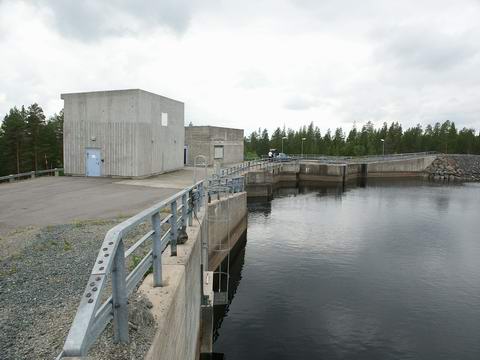Gallejaur
Facts
Water information

Gallejaur
It was built in two stages: Unit 1 was commissioned in 1964 and Unit 2 in 1988. This station utilises the head (drop) available along the stretch of river between the Dyngseleforsen rapids and the Treholmsforsen rapids. A distinctive feature of the power station is that it stands on an artificial lake called Gallejaur which is connected to the Sanfjord dam by a canal that is 6 km long and is actually a stream ‘turned backwards’. This creates an impressive head of 80 m with a relatively short tunnel. Gallejaur is the largest of Vattenfall’s hydro power stations on the Skellefteå River.
Lake Sädvajaure is regulated in the upper reaches of the river. Hornavan, which is Sweden’s deepest lake at 226 metres, and Rebnisjaure form two additional reservoirs. Downstream of the Hornavan dam are the Arjeplog rapids consisting of seven streams with a drop of 5–6 metres. Uddjaur, which is known for its 365 islands, is the next reservoir. Across Kasker rapids, the river continues down to Storavan, the lowest reservoir on the Skellefteå River.
The reservoirs jointly serve the power stations on the river. The owners of the different power stations along the river – Skellefteå Kraft, Vattenfall and Uniper – have formed Skellefteälvens regleringsföretag (the Skellefteå River Water Regulation Company), which manages the water regulation system.
Work on Unit 1 of Gallejaur Power Station started in 1960, and the unit was commissioned in 1964. The unit incorporates a Francis turbine.
Construction of Unit 2 began in 1985, and the unit was commissioned on 1 September 1988. This unit also incorporates a Francis turbine. The construction of the second unit greatly increased the scope available for short-term regulation.

